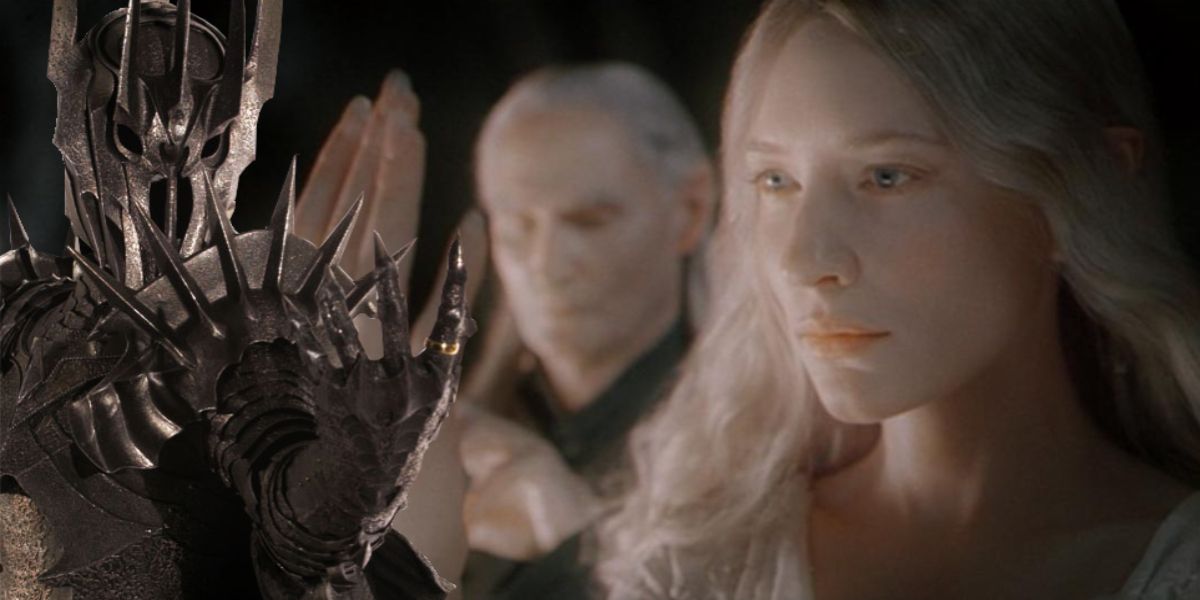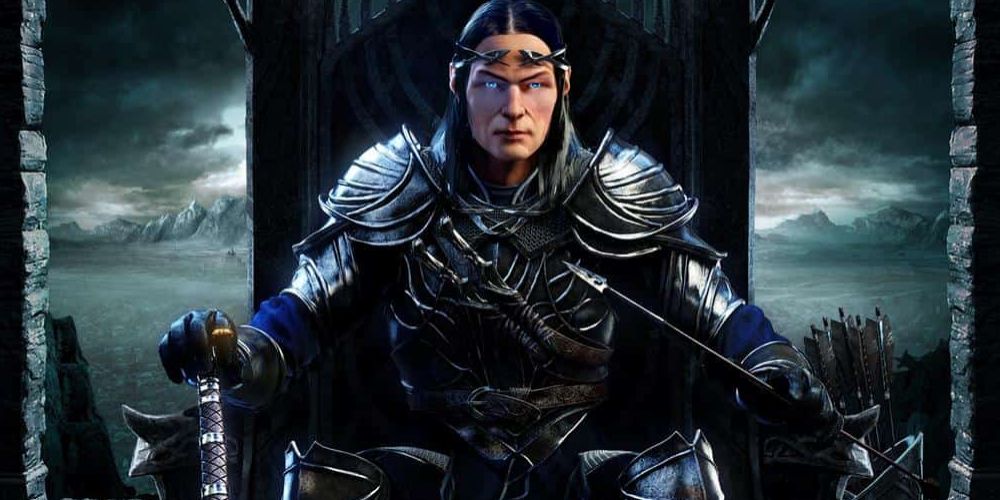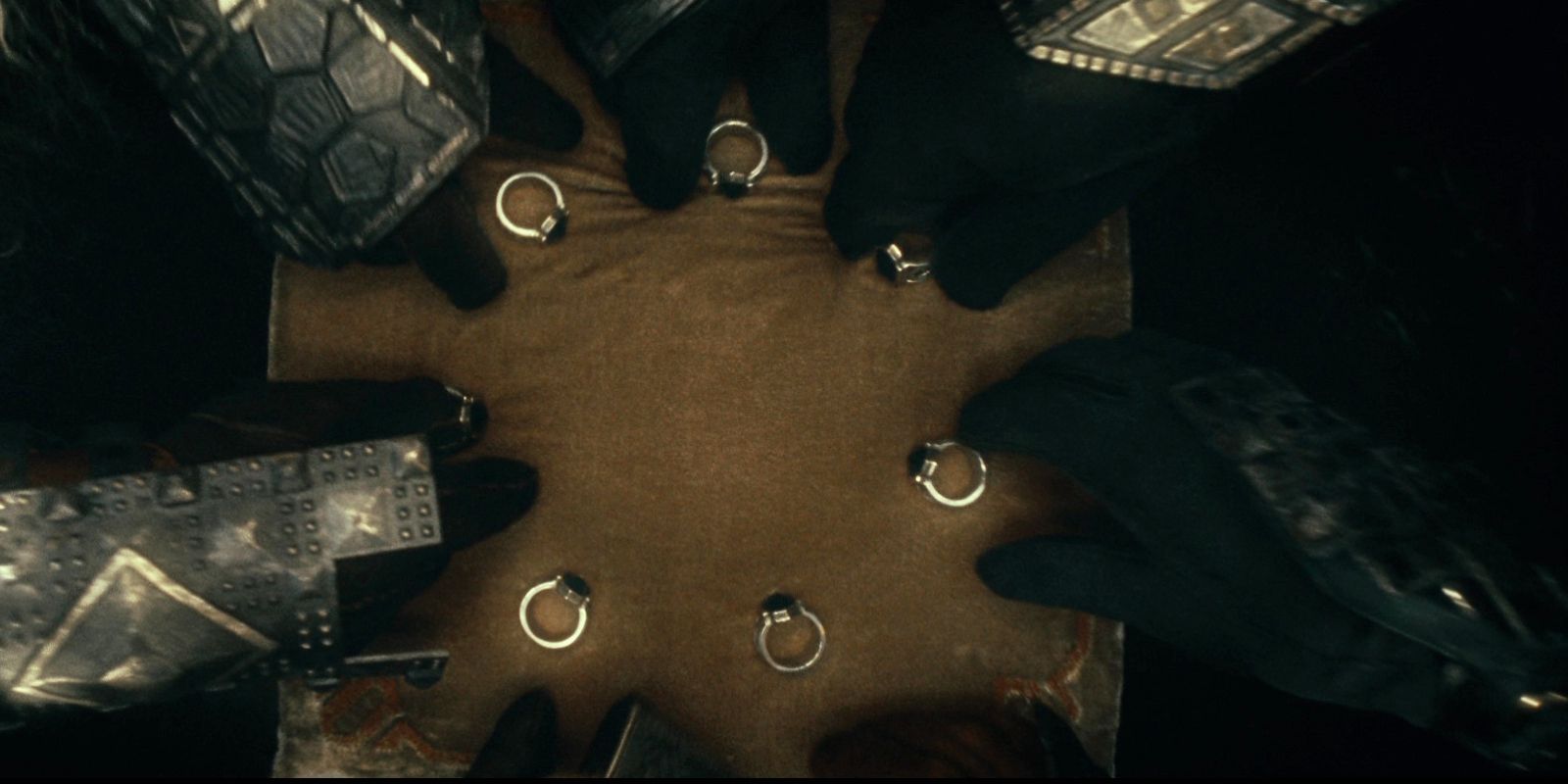J. R. R. Tolkien's The Lord of the Rings trilogy depicts the end of a war between the Free Peoples of Middle-earth and the Dark Lord Sauron, who wished to rule over them all. As the titular "Lord of the Rings," Sauron sought to dominate the minds of others through magical Rings of Power, with him using the master One Ring to control the other rings and their bearers. Although the rings ended up in the hands of Men, Dwarves and Elves, Sauron originally had a much different plan in mind for how to take control of Middle-earth.
During the Second Age, Sauron began forming an army to conquer Middle-earth and finish the work of his former master, the first Dark Lord Morgoth. As part of his conquest, Sauron wished to take control of the Elves and add them to his army, as he viewed them as the most powerful of all the Free Peoples. Sauron took on the fair appearance of Annatar, the "Lord of Gifts," who seemingly wanted to share his knowledge of crafting with Elven craftsmen and smiths. Not all of the Elves trusted Annatar, but the Elves of Eregion could not see through his deception and welcomed his aid. Celebrimbor, the ruler of Eregion and the greatest Elven smith of the Second Age, sought to learn whatever he could from this mysterious gift giver.
With Celebrimbor willing to learn, Sauron taught him and his fellow Elven smiths how to create the Rings of Power. The Elves believed they could use these rings to preserve their lands and remain as rulers of Middle-earth to avoid sailing to Valinor, where they were subservient to the godlike Valar. The Elves successfully crafted 16 Rings of Power with the help of Sauron. Celebrimbor crafted the three greatest Elven rings in secret and without Sauron's influence. The rings now complete, Sauron set the final part of his plan into motion. In the fires of Mount Doom, Sauron crafted the One Ring with the intention of dominating the Elves who wore the other Rings of Power.
Unfortunately for Sauron, the Elves sensed his true intentions the moment he put on the One Ring and managed to take off their own, avoiding his dominion. Furious that his plan failed, Sauron demanded the Rings of Power returned to him. When the Elves refused, Sauron initiated open warfare against them and destroyed Eregion, successfully claiming the nine rings later given to mortal Men. Sauron captured Celebrimbor and tortured him into revealing the location of the seven rings later given to the Dwarves. Celebrimbor refused to divulge the location of the three Elven rings he crafted in secret, resulting in Sauron killing the Elf and moving forward with a new plan.
Sauron knew that his chance of controlling the Elves had passed for the time being, so he turned to the other races of Middle-earth. He gifted seven rings to the Dwarf lords, though they ended up being too stubborn to dominate. Instead, their desire for gold was corrupted into dangerous greed that led to the downfall of several Dwarf kingdoms. The last nine rings Sauron gave to human kings, knowing Men were easier to sway than Elves or Dwarves. These nine eventually became the Nazgûl, twisted wraith servants of Sauron who served at his beck and call.
Though Sauron gained a great asset with the Nazgûl, his plan to dominate the Elves had ultimately failed. Sauron believed that conquering the Elves would have granted him dominion over the most powerful race of Middle-earth. With the Elves' power under his command, Sauron could then conquer the other "lesser" races of Middle-earth with ease. After his true intentions were revealed, Sauron was forced to fall back on those lesser races, only for the rings to end up not working on the Dwarves either. Sauron's failure to control the Dwarves with the rings most likely stemmed from the fact that the rings were never designed for the Dwarves in the first place.
Men, however, had weaker wills than Dwarves or Elves, leaving them ripe for control. The Nazgûl were the only successful part of Sauron's plan, becoming a formidable force that struck fear in all who came across them. The Men-turned-Nazgûl proved to be dangerous foes, so one can only imagine what sort of powers an Elf-turned-Nazgûl would wield. Had the Elves been twisted into terrifying wraith-like creatures under Sauron's will, Middle-earth's Third Age would have likely ended with Sauron claiming control over all the Free Peoples of Middle-earth.



